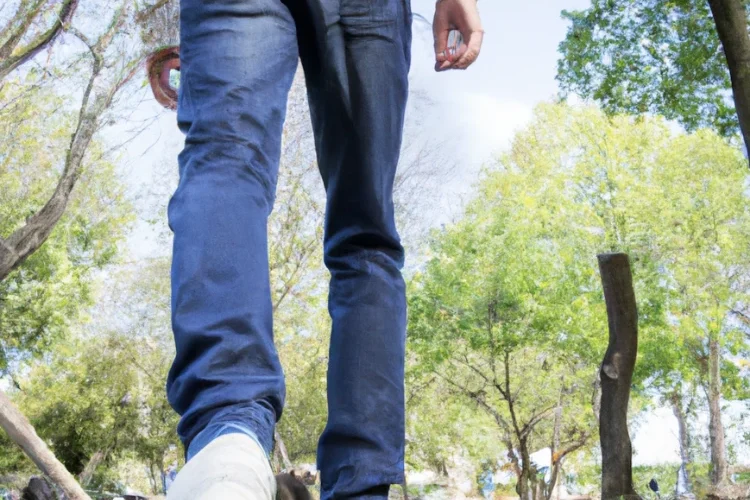Recently, I’ve become something of a “health mentor” to my family and friends, victims of overeating and a sedentary lifestyle. My top recommendation? Walking. Not just because it’s a great opportunity to catch up on symphonies and novels, turning seemingly wasted hours into a cultural feast, but also because it naturally curbs overeating. Especially if your goal is weight loss, you’ll find yourself having to negotiate with your culinary desires. And for those battling the bulge, shedding those extra pounds of fat becomes a primary goal (unless, of course, lowering blood sugar to a non-alarming level becomes the priority, but even then, dietary restrictions become even more crucial).
So, here’s my assertion: regular, lengthy walks significantly reduce the urge to indulge in food.
A friend and former classmate once objected, “The more I engage in physical activity, the more calories I consume. It’s like I need to compensate. Lift a dumbbell, sit on a stump, eat a pie. Squeeze an expander, and my other hand reaches for a cream-filled bun.”
I interrupted him, “But did you actually go for walks?”
“Of course, eight thousand steps a day.”
“Forget about steps. Measure the distance. And remember, a walk is a walk. It doesn’t have to be ‘brisk’ (a silly term, really, since ‘brisk walking’ is basically running, and that’s a whole different technique). Walking should be comfortable and not exhausting.”
And if you walk “properly,” you’ll indeed find yourself less inclined to eat.
There are three main reasons for this.
First, as I’ve mentioned in a previous post, “Why Walking?”, moderate physical activity stimulates the production of endorphins, increasing our sense of satisfaction.
When we’re content, we’re less likely to seek comfort in our usual tasty treats.
And if you manage to tire yourself out with an evening stroll, you’ll likely fall asleep without needing that detrimental “midnight snack.”
Second, boredom plays a significant role in overeating.
Many overeaters consume too much not because of an insatiable physical hunger but simply out of boredom.
People do a lot of things out of boredom. They write poetry, steal cars, start families, destroy families, wage wars, knit macramé or plot schemes…
And, of course, they eat.
Sitting at the computer, watching a not-so-interesting movie (or a dull scene), and there’s nothing else to do, so the hand reaches for a bowl of nuts or chips, munching away mindlessly. “Sadly, mechanically,” as they say.
Smokers might light up another cigarette in similar moments, also seemingly without need, not yet craving it.
But for a diabetic, chips could be far more harmful than a cigarette for a smoker.
Either way, a simple remedy for both “unmotivated” smoking and “spontaneous” binge-eating is a walk.
When you’re strolling through the park, listening to music, and watching squirrels (or rabbits… or foxes… or raccoons… or whatever wildlife you encounter), your attention is diverted, leaving no room for boredom or the temptation to smoke or snack.
The third reason is physiological.
It’s well-known that individuals with obesity and hypertension (often the result of a sedentary lifestyle) not only have a psychological habit of overeating but also a naturally increased appetite. They eat everything and still can’t feel satiated.
The root of the problem is that they’ve developed cardiovascular issues (plaque buildup, narrowed arteries) which impair nutrient delivery to critical tissues, especially the brain.
And the brain doesn’t like to starve.
So it urges, “Come on, pile it on the plate, eat faster: I’m hungry!”
Walking, among other benefits, significantly improves circulation.
Legs are often called “the second heart” for a reason.
Even a short walk can increase nutrient delivery to the brain, satisfying its “bulimia.”
In fact, when you suddenly feel hungry at an inconvenient time, simply standing up and walking in place for a couple of minutes can often be enough to make the brain stop its whining for food.
Neck exercises, which genuinely enhance head blood supply, can also be beneficial. While some may overstate their health benefits, your head indeed feels better after performing them.
If walking (even in place) isn’t an option and you’re tempted by food (say, at a corporate event), but know you shouldn’t indulge, you can use the same trick I did when quitting smoking. It’s quite a universal method against any “harmful” bodily urges.
I would simply hold my breath. And keep it held… not until convulsions, but close to it.
When you finally let yourself breathe again, the body feels so relieved and rewarded that it forgets about its other cravings, be it for a cigarette or food, for at least ten minutes. Then, you can “squeeze” your windpipe again if necessary.
Many of my acquaintances have successfully used this method to fend off various habits and temptations without suffocating themselves.
However, it’s probably wise to consult with a reliable doctor about whether you can safely hold your breath, just to be safe.
As for walking, there should be no contraindications for anyone, provided it’s done without fanaticism, fuss, or trying to keep up with youngsters. However, diabetics should note that a ten-kilometer walk can easily lower blood sugar by two or three units (though individual results may vary).
If you’re heavily reliant on insulin, be mindful of potential cumulative effects to avoid hypoglycemic coma, especially if you’ve consumed alcohol beforehand.
And just in case, carry some candies with you.
While I can’t categorically say, “Forget about insulin if you have ‘type 2’ and your levels are only 10-12, as walking alone can ‘press’ it to normal without indulging in pastries,” I’m not a doctor. But if you’re using insulin, remember that a cumulative effect might occur.
Disclaimer
The information provided in this article is for general informational purposes only. The content presented on this website should be considered solely as opinions and personal experiences. Read more
